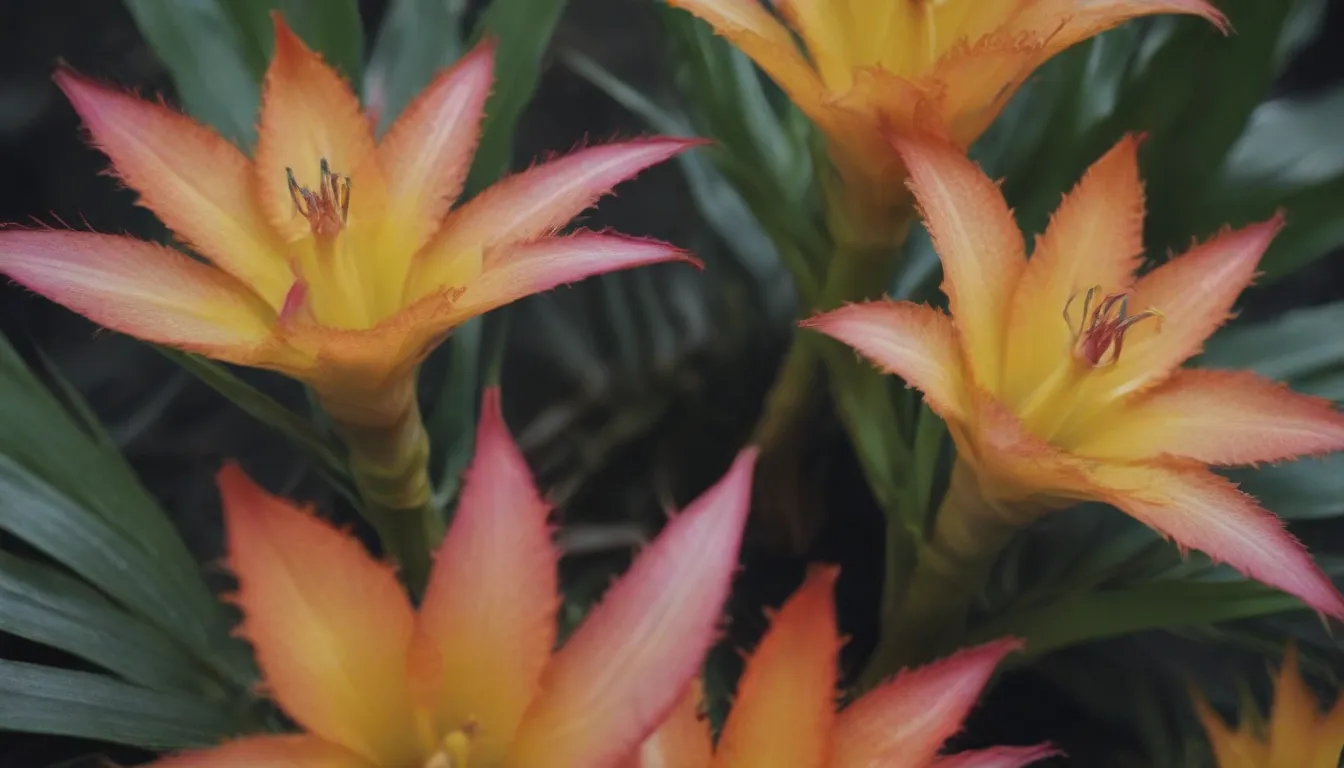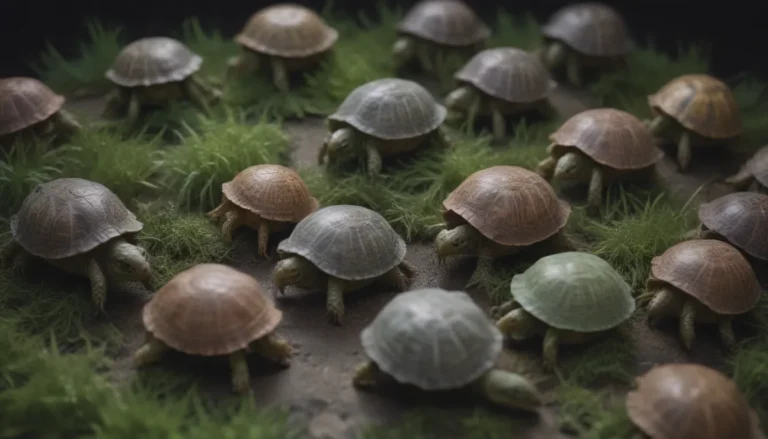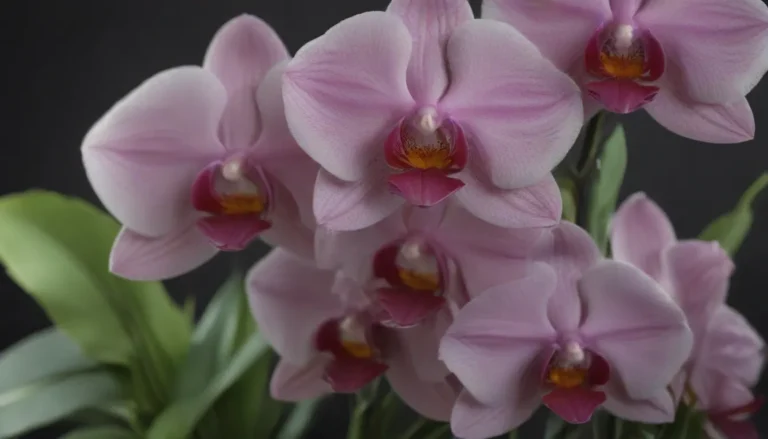Everything You Need to Know About Growing Guzmania Bromeliads for Beautiful Blooms

Are you fascinated by the vibrant colors and unique appearance of Guzmania bromeliads? These tropical beauties are a popular choice for indoor gardens, adding a splash of color and charm to any space. If you’re considering adding a Guzmania bromeliad to your plant collection, it’s essential to understand how to care for these lovely plants properly.
Guzmania Bromeliad Care: A Complete Guide
Guzmania bromeliads may require a bit of special care, but once you grasp the basics, they are relatively easy to grow and maintain. Let’s dive into the essential aspects of caring for Guzmania bromeliads to ensure they thrive in your home.
Light
- Different species of Guzmania bromeliads have varying light requirements.
- Provide part to full shade for species like G. lingulata, while others may need bright, indirect light.
- Some types can tolerate low or artificial light, making them suitable for indoor settings with limited natural light.
Soil
- Guzmania bromeliads are epiphytic plants that typically grow on trees, but they can also be cultivated in soil.
- Choose a well-draining, porous mix to prevent the roots from becoming waterlogged.
- Consider using a blend of quality houseplant soil, sphagnum moss, and perlite or vermiculite.
Water
- Water your Guzmania bromeliad thoroughly every one to two weeks during the growing season, allowing the soil to dry out between waterings.
- During winter, reduce watering frequency to every two to three weeks.
- Keep the cup in the center of the rosette filled with water and refresh it occasionally, but avoid overwatering to prevent root rot.
Pro Tip: Guzmania bromeliads may react poorly to heavily treated tap water. Consider using distilled or rainwater, or let tap water sit out for 24 hours before watering.
Temperature and Humidity
- Maintain warm temperatures and high humidity levels for optimal growth.
- Keep nighttime temperatures above 60°F and daytime temperatures between 70°F to 80°F.
- Supplement household humidity levels to around 60% to 70% to create a moist environment for your bromeliad.
Fertilizer
- Feed your Guzmania bromeliad with a diluted orchid fertilizer once or twice during the growing season.
- Apply the fertilizer to the leaves using a spray bottle to avoid salt build-up.
- Watch out for signs of overfertilization, such as browning leaf tips or a white crust on the soil surface.
Types of Guzmania Bromeliad
There are over 120 species of Guzmania bromeliads, each with its unique characteristics. Here are three popular species you might encounter:
- Guzmania lingulata ‘Scarlet Star’
- Guzmania conifera
- Guzmania monostachia
Pruning and Propagating Guzmania Bromeliad
- It is unnecessary to prune your Guzmania bromeliad until after it matures and flowers.
- Remove spent flowers close to the base of the stem to encourage the growth of offshoots.
- Propagate your bromeliad by removing and planting offshoots (pups) once they have developed.
Tip: When propagating your Guzmania bromeliad, select offshoots that are large enough to thrive on their own but not too large to drain all the energy from the mother plant.
Potting, Repotting, and Overwintering
- Choose shallow pots for your Guzmania bromeliad, with 4 to 6-inch containers being sufficient for most varieties.
- Repot only when necessary, typically every four to five years, and increase the pot size by no more than 2 inches.
- Overwinter your bromeliad indoors when temperatures drop below 60°F, and reduce watering during the rest period in winter.
Common Pests, Diseases, and Troubleshooting
- Guzmania bromeliads can be susceptible to pests like mites, aphids, scale, and mealybugs. Treat infestations promptly by cleaning the foliage with a damp cloth.
- Watch out for root rot and salt build-up, which can result from overwatering and overfertilization.
- Address leaf scorch by adjusting the plant’s light exposure to prevent further damage.
Encouraging Blooms and Post-Blooming Care
- Guzmania bromeliads bloom once in their lifetime, typically between one to three years of age.
- Encourage blooming by providing distilled water in the center cup and adding diluted seaweed or compost tea every two weeks.
- Once your bromeliad blooms, the plant is nearing the end of its life cycle. Trim spent flowers and continue regular care to support offshoot growth.
Bloom Months, Duration, and Characteristics
- Guzmania bromeliads can bloom at any time of the year, with blooms lasting up to six months.
- The flowers are typically white or yellow, surrounded by colorful bracts in shades of red, orange, burgundy, or purple.
- While Guzmania bromeliad flowers are not fragrant, their vibrant colors make them a visually striking addition to any indoor garden.
In Conclusion
Growing Guzmania bromeliads can be a rewarding experience, offering a burst of color and tropical flair to your home. By following these care tips and guidelines, you can ensure that your Guzmania bromeliads thrive and produce stunning blooms for years to come. Whether you’re a seasoned plant enthusiast or a beginner looking to expand your indoor garden, Guzmania bromeliads are a beautiful and versatile choice that will brighten up any space. Happy gardening!





